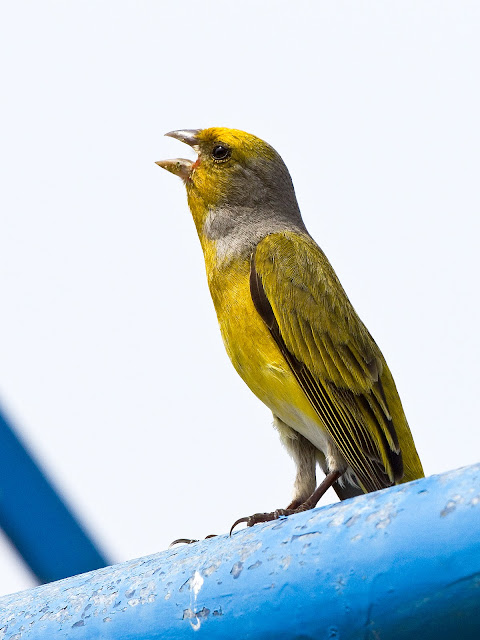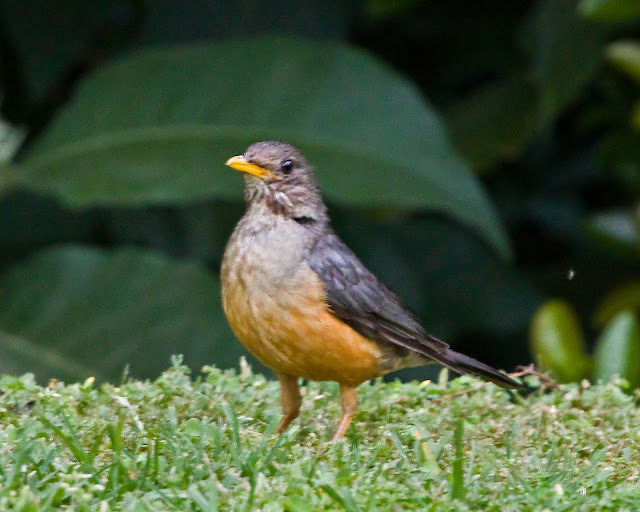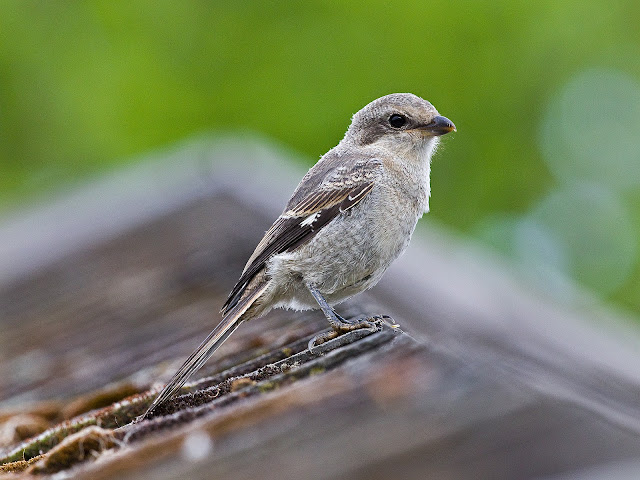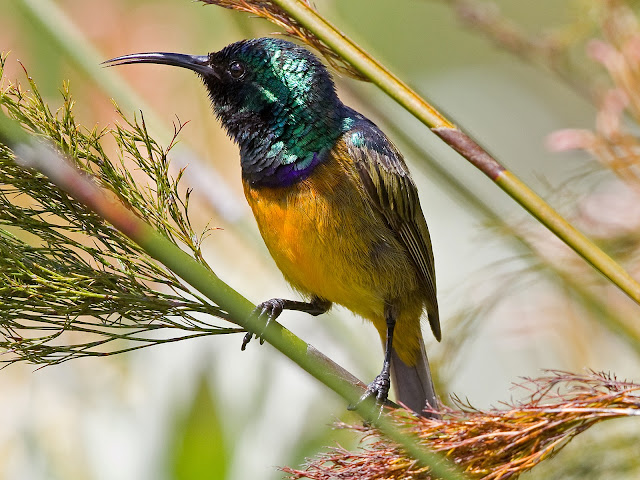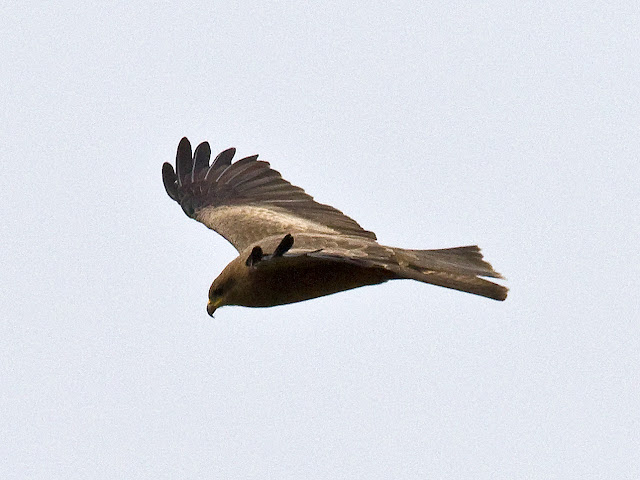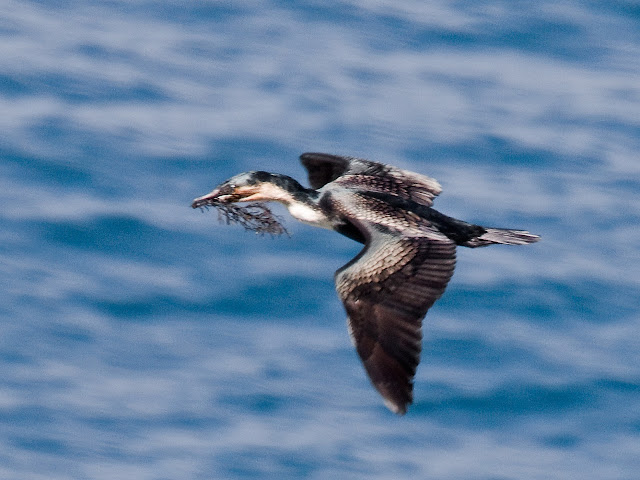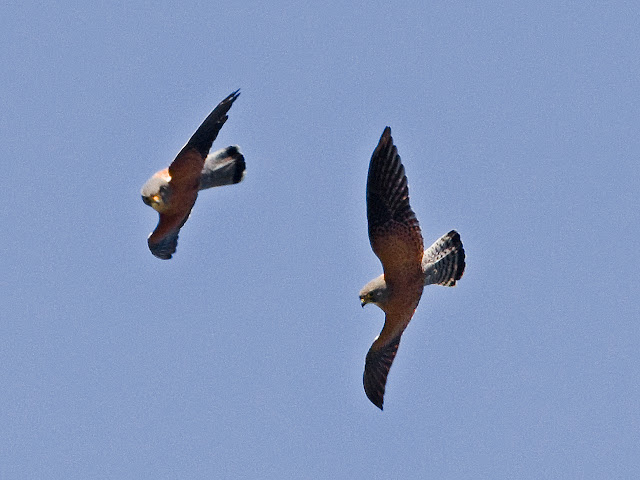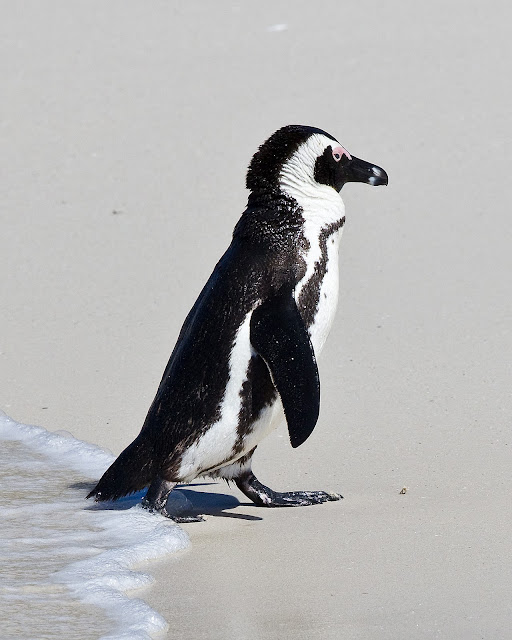I am still waiting for the Waxwings to arrive in Sussex but with time moving on it is starting to look as though we could miss out on seeing them. That will not come as a surprise to most of the local birders. In an exceptional year across the country, for rare and scare birds, Sussex has been noticeably missing from the list. Sussex, Surrey and Hampshire seem to be a birding Bermuda Triangle.
Today I needed to travel down to Canterbury. It is a regular trip and I usually take the opportunity to visit a few birding sites on the way. With Waxwings having been reported in the north Kent town of Strood and with it only being a short distance from my intended route it seemed to be worth a visit. At least I would have the opportunity of a 2016 year tick.
When I arrived it didn't look too bad. There were only two other birders present and the Waxwings were flying between a high tree perch and an orange fruiting Rowan in a garden opposite the Bounty Pub. The only problem was that the Rowan was mostly in shadow.
After about half an hour the lighting improved but unfortunately the number of birders also increased. We were getting up close to twenty people with most standing directly under the feeding tree, setting up tripods and talking loudly. The Waxwings were coming down but were just grabbing a few berries and heading back to the safety of their high level perch.
How inconsiderate birders can be. Don't they realise that I need to have these bird all to myself, for about an hour, in what was turning out to be perfect light. We all have our problems. In the end I gave in, joined the fray, grabbed a couple of quick pictures, and then left to find a more peaceful place.
Dave and I have been able to get some great pictures of Waxwings in the past but you need time and space. A large twitch severely reduces your chances of success. I think, that in the new year, we could be making the trip up north, possibly even to Scotland where at the moment Waxwings can be found in their hundreds.
My route to Canterbury then continued via a minor detour to Dungeness. I had no specific target but it is always a place where something unusual could turn up. There were Smew and Goldeneye on the Burrows Pit but both were too far away for even a record shot. I also failed to find the Ring-necked Duck behind Bolderwall Farm. However, there were good numbers of Tree Sparrows around Bolderwall, which was good to see after missing them earlier in the summer.
The Long-eared Owl was in its usual spot behind the dipping pool. With the green foliage gone it was at least a bit easier to find him this time.
Lots of other birds but nothing really unusual. The Great White Egret dosen't even raise an eyebrow these days other than for me to think that it is unusual to only find one at Dungeness.
Finally another shot of a Kestrel. One day I will get that picture of a Merlin that has been at the top of my list for so long.
Not a bad day out given that it is just a day after the mid winter solstice.



























